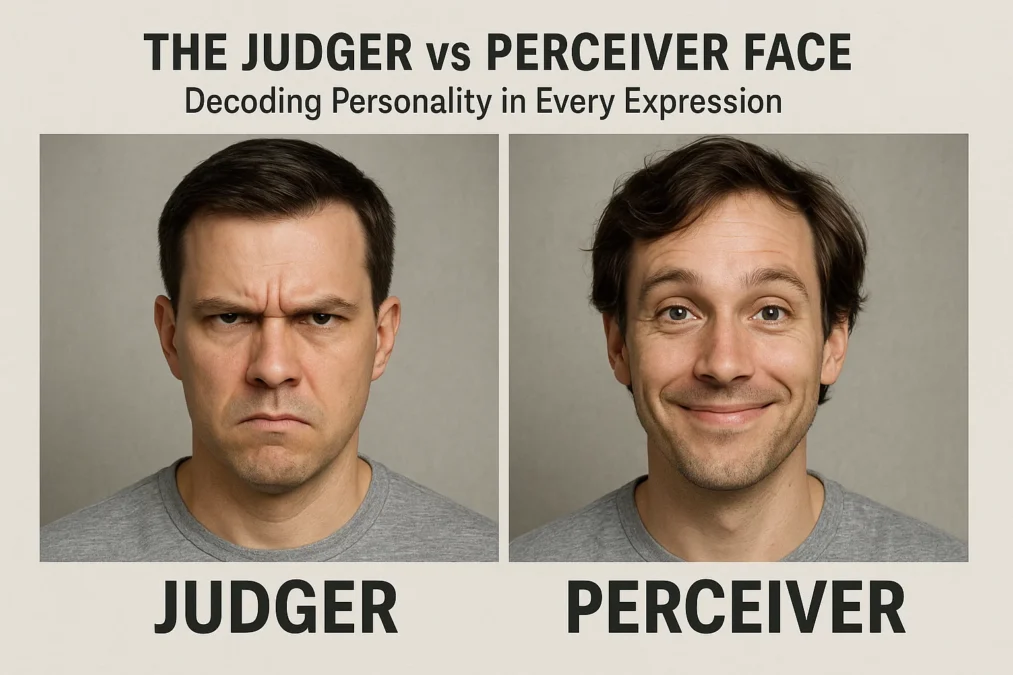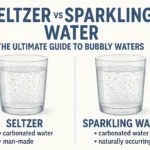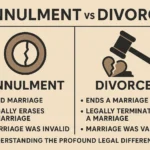Have you ever met someone and, within moments, felt you could guess their approach to life? Perhaps their face radiated calm organization, or maybe it buzzed with spontaneous energy. This isn’t pure intuition; you might be picking up on subtle cues that point to a fundamental aspect of their personality. In the world of the Myers-Briggs Type Indicator (MBTI), the Judging (J) and Perceiving (P) preference is one of the most outwardly visible. It dictates how we interact with the outer world, manage our lives, and, yes, even how our faces settle into expressions. The concept of the “Judger vs Perceiver face” isn’t about rigid stereotypes but about understanding the energetic imprint that a preference for structure or flexibility leaves on a person’s demeanor.
This article will be your deep dive into this fascinating phenomenon. We’ll move beyond the basic definitions of “organized” versus “spontaneous” to explore how these cognitive styles manifest in facial expressions, body language, and even how people handle stress. Understanding the Judger vs Perceiver dynamic is like acquiring a new lens through which to see human interaction. It can improve your communication, strengthen your relationships, and offer a greater sense of self-awareness about the energy you project into the world. So, let’s lean in and learn to read the story written on the faces around us.
Understanding the Foundation: J and P in the Myers-Briggs Framework
Before we can decipher the Judger vs Perceiver face, we must first build a solid understanding of what these terms actually mean within the MBTI system. Often, people misunderstand “Judging” as being judgmental and “Perceiving” as being perceptive. While there’s a kernel of truth in the latter, the definitions are more specific. The J/P dichotomy indicates our preferred way of dealing with the external world. Does a person like to have matters settled and decided, or do they prefer to keep their options open and gather more information?
A person with a Judging preference (which includes types like ESTJ, ISTJ, ENTJ, INTJ, ESFJ, ISFJ, ENFJ, and INFJ) desires closure, structure, and decisiveness. They feel most comfortable when a plan is in place and they are working toward its completion. Their outer life tends to be organized and scheduled. A person with a Perceiving preference (ESTP, ISTP, ENTP, INTP, ESFP, ISFP, ENFP, and INFP) thrives on flexibility, adaptability, and spontaneity. They prefer to keep decisions open as long as possible to allow for new information and opportunities. Their outer life often appears more fluid and open-ended.
It is crucial to remember that this preference is about our external orientation. Internally, a Judger might be full of curiosity and open-mindedness (if they use a Perceiving cognitive function like Intuition or Sensing internally), and a Perceiver can be incredibly firm in their internal values and principles (if they use a Judging function like Thinking or Feeling internally). The face, however, is part of our external presentation to the world, and it is profoundly influenced by whether we lead with a Judging or Perceiving attitude in our daily interactions. This external projection is what gives rise to the observable patterns we call the Judger vs Perceiver face.
The Judger Face: A Study in Composure and Resolution
When observing the typical Judger face, one is often struck by an air of composure and resolution. This is not a hard, unyielding mask, but rather a countenance that suggests things are under control. The muscles of the face often appear more settled, contributing to a look of determined calm. You might notice a firmness around the jawline, especially when listening or concentrating, which signals a mind actively working to analyze, decide, and conclude. Their eye contact is typically steady and direct, reflecting a desire to engage decisively with the person in front of them and reach a clear understanding.
The resting state of a Judger face can often be described as “neutral-ready.” It is not necessarily a frown, but it is a face that is prepared to make a decision, to offer an opinion, or to assess the next step in a plan. There is a sense of purpose etched into their expressions. When they smile, it is often a genuine, full smile of approval or satisfaction—a reward for when things are going according to plan. However, the baseline is one of managed emotion, where expressions are controlled and purposeful rather than leaking out uncontrollably. This controlled demeanor is a direct reflection of their preference for a structured and predictable environment.
The Body Language of Decisiveness
The Judger face is supported by complementary body language that reinforces their preference for order. Their posture is often upright and purposeful. Movements can be deliberate and efficient, with little wasted motion. In a conversation, they may nod to signal agreement or understanding, effectively “checking a box” in the mental list of the discussion’s progress. They tend to appear prepared, with their belongings organized and easily accessible. This overall package—the composed face, the direct gaze, the purposeful posture—sends a clear message to the world: “I am here to make things happen, to decide, and to move forward.” It is the visible manifestation of a mind that seeks closure and finds comfort in resolution.
The Perceiver Face: A Canvas of Curiosity and Openness
In direct contrast, the Perceiver face is a dynamic canvas of curiosity and openness. Where the Judger face exhibits settled composure, the Perceiver face is alive with activity and potential. The eyes are often the most telling feature; they tend to be wide, bright, and darting, taking in every detail of the environment. There is a sense of perpetual scanning, as if the mind behind the eyes is constantly gathering new data from the world. The eyebrows might be more expressive, raising frequently in surprise or curiosity, reinforcing an expression of wonder and continuous inquiry.
The mouth of a Perceiver is also highly expressive. Smiles can flicker on and off quickly in response to new thoughts or observations. They are more likely to have a relaxed, open-mouthed expression of surprise or interest when engaged in conversation. The overall musculature of the Perceiver face seems more fluid, shifting rapidly from one expression to another as new stimuli are processed. Their resting face might not be a neutral “ready” state but rather a neutral “interested” state, as if waiting for the next interesting thing to come along. This creates an aura of approachability and spontaneity.
The Body Language of Flexibility
The body language that accompanies the Perceiver face is loose, relaxed, and adaptive. They are more likely to lean back and take in a scene, or to use open and gestures that seem to explore the space around them. Their posture is often casual and flexible, perhaps slouching comfortably in a chair. Movements can be quick and unpredictable, reflecting a mind that jumps from one idea to the next. They may fidget or play with objects as a way to channel their constant mental energy. This entire presentation screams flexibility. It tells the world, “I am here to experience, to learn, and to see what happens next.” It is the physical embodiment of a preference for keeping options open and staying adaptable to new information.
Stress and the J-P Face: How Pressure Reveals Our Core Preferences
The true test of any personality characteristic is how it holds up under pressure. The dynamics of the Judger vs Perceiver face become even more pronounced during times of stress, but often in inverted or exaggerated ways. Understanding these stress responses is key to empathizing with both types and avoiding conflict.
For the Judger, stress typically arises from a loss of control, a disruption of plans, or extreme ambiguity. When their need for order and closure is thwarted, the composure of the Judger face can harden into rigidity. The firm jaw may become clenched, the steady gaze may turn into a stern glare, and the lips may press into a thin, tight line. They might become curt, critical, and overly controlling in a desperate attempt to impose the structure that they crave. Their organized mind, which is usually an asset, can become a trap, cycling through “should haves” and “must dos” without flexibility. The Judger face under stress is a mask of frustration at a world that refuses to follow the plan.
For the Perceiver, stress often comes from being forced into premature closure, subjected to rigid deadlines, or feeling trapped in overly structured environments. When their need for flexibility and exploration is stifled, the lively Perceiver face can shut down. The bright, curious eyes may become glazed or distant, checking out of a situation that feels oppressive. They may become procrastinating, distracted, and unable to focus on the task that is boxing them in. Alternatively, they might become impulsively agreeable, saying “yes” to anything that offers an escape from the constraint, only to later become overwhelmed by the commitments they’ve hastily made. The Perceiver face under stress shows the strain of a free spirit being caged.
The Workplace Dance: J and P Collaboration
The modern workplace is a grand stage for the dance between Judging and Perceiving types. Their contrasting approaches are not a weakness but a potential powerhouse of productivity and innovation—if managed with understanding. A team comprised solely of Judgers might efficiently execute a plan but miss crucial adaptive opportunities. A team of only Perceivers might generate a thousand brilliant ideas but never ship a finished product. The magic happens in the collaboration.
Judgers bring essential structure to a project. They are the masters of deadlines, milestones, and Gantt charts. They provide the framework that turns a creative idea into a actionable project. Their Judger face in meetings conveys reliability; when they say a task will be done by Friday, their decisive energy makes you believe it. They keep the train running on time and ensure that goals are met. Their ability to make firm decisions prevents projects from stalling in endless cycles of deliberation.
Perceivers bring indispensable adaptability and creativity. They are the ones who ask, “But what if we tried this instead?” right when the plan seems settled. They thrive in brainstorming sessions, their expressive faces lighting up with each new possibility. They are excellent at dealing with unexpected changes and pivot quickly when new information arises. While a Judger might see a roadblock, a Perceiver sees a detour full of potential new sights. Their open-ended approach ensures that a project doesn’t become so rigid that it breaks under pressure or misses a vital innovation. The Perceiver face in a meeting, alive with curiosity, can reinvigorate a stagnant discussion and open doors no one knew were there.
University of Metaphysics vs University of Metaphysical Sciences A Comprehensive Guide
Beyond the Face: Communication Styles and Decision-Making
The differences between Judgers and Perceivers extend far beyond facial expressions and into the very core of how they communicate and make decisions. These differences are often the source of friction in relationships, both personal and professional. A Judger’s communication is often direct and conclusive. They speak in statements, aiming to bring conversations to a clear resolution. They use language like “Let’s decide,” “We should,” and “The plan is.” Their sentences have periods. They want to know the point and the outcome.
A Perceiver’s communication is exploratory and open-ended. They speak in questions and possibilities, aiming to keep the conversation alive and evolving. They use language like “What if…”, “Another option could be…”, and “Let’s keep looking into it.” Their sentences have ellipses and question marks. They are often thinking out loud, using conversation as a tool for discovery rather than a means to an end. This can be misinterpreted by Judgers as indecisiveness or a lack of conviction.
When it comes to decision-making, the gap is even wider. A Judger feels a sense of relief and satisfaction once a decision is made. It is a task to be completed, and once it is, they move on to execution. A Perceiver feels a sense of limitation once a decision is made; it closes off other avenues. They often prefer to delay decisions to the last possible moment to ensure all data is considered. To a Judger, this looks like procrastination. To a Perceiver, it looks like due diligence. Recognizing these inherent, neutral differences is the first step toward bridging the communication gap.
Nurturing Relationships Across the J-P Divide
Whether with a romantic partner, a family member, or a friend, a relationship between a Judger and a Perceiver requires conscious effort and mutual respect. The strengths of one are often the direct needs of the other, which can lead to either beautiful synergy or intense frustration. The key is to appreciate the balance they bring to each other’s lives rather than trying to change the other person’s core nature.
A Judger can nurture the relationship by learning to embrace spontaneity. This means consciously allowing space for the Perceiver’s need for flexibility. Instead of planning every minute of a weekend, leave a block of time open for “whatever happens.” Practice using open-ended language like “We could maybe think about…” instead of “We will do this.” Understand that your Perceiver partner’s delayed decision-making is not a personal rejection of your plans, but their natural process of exploration. Appreciate how their adaptability can help you both navigate life’s unexpected twists with more grace.
A Perceiver can nurture the relationship by respecting the Judger’s need for structure. This means making an effort to be on time, to follow through on commitments, and to provide clarity when possible. If you need to keep options open, communicate that proactively: “I’m not ready to decide on the vacation yet, but I promise I will have my research done by next Tuesday.” Give your Judger partner the gift of a decided plan sometimes; it reduces their anxiety and makes them feel secure. Appreciate how their organizational skills create a stable foundation from which your spontaneous adventures can safely launch.
The Myth of the Pure Type: Embracing Your Whole Self
No discussion of the Judger vs Perceiver face, or any Myers-Briggs dichotomy, is complete without a crucial disclaimer: no one is a pure J or a pure P. Everyone uses both judging and perceiving processes every day. The type preference simply indicates our natural default, our comfort zone. A strong Judger has a perceptive side, and a strong Perceiver has a judging side. In fact, psychological health involves developing the ability to access both sets of skills depending on what the situation demands.
A well-developed Judger learns to tap into their inner Perceiver when necessary. They can become more spontaneous, learn to enjoy a unplanned moment, and become more adaptable in the face of change. This flexibility prevents them from becoming brittle and overwhelmed when life inevitably deviates from the script. Similarly, a well-developed Perceiver learns to harness their inner Judger to bring their brilliant ideas into reality. They can develop focus, meet deadlines, and make tough decisions when required, which allows them to translate their potential into tangible achievements.
The goal of understanding type dynamics is not to pigeonhole yourself or others but to expand your behavioral repertoire. Knowing you have a Perceiver face doesn’t mean you’re doomed to be disorganized; it means you understand that you may need to create external structures to compensate for your internal flexibility. Recognizing your Judger tendencies toward rigidity allows you to consciously practice letting go. This journey of self-awareness is about integration, allowing both the Judger and the Perceiver within you to work in harmony.
Comparison Table: Judger vs. Perceiver Characteristics
| Feature | Judger (J) | Perceiver (P) |
|---|---|---|
| Core Desire | Closure, decision, structure | Openness, options, flexibility |
| Approach to Life | Planned and decided | Spontaneous and adaptable |
| Facial Expression | Composed, resolved, steady gaze | Curious, alert, expressive, darting eyes |
| Under Stress | Becomes rigid, critical, and controlling | Becomes distracted, procrastinating, or impulsive |
| Work Style | Prefers tasks completed, deadline-oriented | Prefers tasks started, discovery-oriented |
| Decision Making | Decisive; feels relief after a decision | Flexible; prefers to keep deciding open |
| Communication | Direct, conclusive, statements | Exploratory, open-ended, questions |
| View of Rules | Guidelines to be followed | Suggestions to be considered |
Quotes on Judgment and Perception
“The Judging attitude seeks to order, control, and regulate life. The Perceiving attitude aims to understand, adapt to, and taste life.” – This is a common interpretation of Carl Jung’s work, though not a direct quote. It perfectly encapsulates the core difference.
“We cannot solve our problems with the same thinking we used when we created them.” – Albert Einstein. This speaks to the value of flexibility (Perceiving) in overcoming challenges created by rigid structures (Judging).
“Plans are nothing; planning is everything.” – Dwight D. Eisenhower. This quote beautifully bridges the J/P divide, honoring the need for structure (planning) while acknowledging the need for adaptability (plans are nothing).
Frequently Asked Questions (FAQ)
What is the most common misconception about Judgers and Perceivers?
The most common misconception is that Judgers are judgmental and Perceivers are perceptive. While Perceivers are often highly observant, the terms are specifically about a preference for structure (Judging) or flexibility (Perceiving) in the outer world. “Judging” in MBTI terms means preferring to make decisions and have things settled, not about being critical of others.
Can your “face” change depending on your environment?
Absolutely. While we have a natural default, everyone can and does adapt their external presentation—including their facial expressions and body language—to fit different contexts. A Perceiver in a highly structured job may learn to adopt a more composed “Judger face” during work hours, and a Judger on vacation may relax into a more open and spontaneous demeanor. This is a sign of psychological flexibility.
Is one preference better than the other?
No, both preferences have immense strengths and potential weaknesses. Judgers provide the structure and decisiveness that drives projects to completion and creates stability. Perceivers provide the adaptability and curiosity that lead to innovation and help navigate change. The healthiest individuals and most effective teams learn to value and integrate both approaches.
How can I tell if I’m a Judger or a Perceiver?
Reflect on your approach to deadlines. Do you feel motivated and comfortable finishing work well ahead of time (Judging), or do you feel energized and focused by the pressure of working right up to a deadline (Perceiving)? Also, consider your personal space. Is it generally organized and tidy (J), or comfortably cluttered with projects in various states of completion (P)? These are strong external clues.
Can a relationship between a strong Judger and a strong Perceiver work?
Yes, it can not only work but thrive. The key is mutual respect and a willingness to see the other’s preference as a complementary strength, not a flaw. The Judger can help the Perceiver become more grounded and focused, while the Perceiver can help the Judger become more spontaneous and adaptable. They can create a balanced and dynamic partnership where both feel valued and supported.
Conclusion
The exploration of the Judger vs Perceiver face is a journey into the heart of human personality. It reveals how our inner cognitive preferences—for structure or for flexibility—radiate outward, shaping our expressions, our body language, and our interactions with the world. This knowledge is not a tool for labeling others but for understanding them. It allows us to see the determined composure in the Judger’s face not as sternness, but as a focus on creating order. It allows us to see the lively curiosity in the Perceiver’s face not as distractibility, but as a radiant engagement with life’s possibilities.
Ultimately, the goal is balance. By appreciating the unique strengths that both Judgers and Perceivers bring to the table, we can build better teams, foster deeper relationships, and cultivate a more integrated sense of self. The healthiest person is not the purest type, but the one who can access their inner Judger to make a decision and their inner Perceiver to adapt when circumstances change. So, the next time you look in the mirror or into the face of someone you know, look beyond the surface. You might just see the beautiful, complex dance between judgment and perception playing out right before your eyes.



